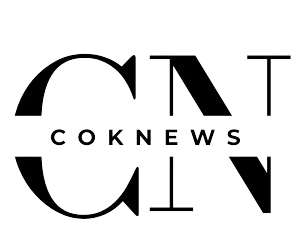I. Introduction
A. Overview of ISO 13485 Certification
ISO 13485 is an internationally recognized standard that establishes requirements for a quality management system (QMS) tailored specifically for the medical device industry. It ensures that companies consistently design, develop, and deliver safe medical devices. Certification demonstrates a commitment to quality and compliance with global industry standards.
B. Importance in the Medical Device Industry
In the highly regulated medical device industry, ISO 13485 is crucial. It supports compliance with international regulations, improves market access, and boosts credibility. Adhering to this standard ensures devices meet strict safety and effectiveness requirements, reassuring both customers and regulators of the product’s quality and reliability.
C. Purpose and Scope of the Blog
This blog serves as a comprehensive guide to understanding ISO 13485 Certification. It outlines the standard’s core principles, benefits, certification steps, and common challenges. By the end, readers will understand the certification’s value and how it enhances both compliance and quality in medical device manufacturing.
II. Understanding ISO 13485
A. Definition and Key Objectives
ISO 13485 defines the requirements for a quality management system tailored to the medical device sector. Its primary goals are to ensure product safety, regulatory compliance, and customer satisfaction. It mandates a systematic approach to product development, manufacturing, and maintenance, focusing on risk management and consistent quality.
B. Historical Background and Evolution
Originally developed to harmonize international medical device standards, ISO 13485 evolved from ISO 9001 but emphasizes regulatory compliance and safety. Updated periodically, it reflects industry advances and regulatory changes, making it a relevant tool for today’s medical device companies aiming for rigorous quality management.
C. Comparison with ISO 9001 for Quality Management
While ISO 9001 covers quality management broadly across industries, ISO 13485 is specific to medical devices. Unlike ISO 9001, it prioritizes regulatory compliance and risk management, requiring comprehensive documentation and controls. This tailored approach makes it essential for ensuring safety and quality in healthcare products.
III. Core Principles of ISO 13485
A. Focus on Risk Management
Risk management is at the heart of ISO 13485. The standard requires identifying, assessing, and mitigating risks throughout the product lifecycle, from design to distribution. This proactive approach minimizes potential hazards, ensuring medical devices meet high safety and performance standards critical to patient health.
B. Emphasis on Regulatory Requirements
ISO 13485 aligns with regulatory standards across major markets, including the FDA and EU MDR. Compliance with this standard demonstrates adherence to global regulatory expectations, enabling smoother approvals and market access, thus ensuring medical devices meet safety and efficacy requirements.
C. Commitment to Product Safety and Quality
ISO 13485’s primary commitment is to ensure medical devices are safe and effective. Through quality controls and validation processes, the standard drives manufacturers to consistently produce reliable products, enhancing trust and protecting patient health while promoting continual improvement in manufacturing practices.
IV. Requirements for ISO 13485 Certification
A. Quality Management System (QMS) Documentation
Comprehensive documentation is essential for ISO 13485 certification. Companies must maintain detailed records of processes, quality controls, and device history, ensuring that every step in manufacturing adheres to predefined quality standards and is readily traceable, supporting accountability and compliance.
B. Risk Management and Control Measures
ISO 13485 requires structured risk management processes, including identifying, analyzing, and controlling risks throughout the product lifecycle. This proactive approach reduces potential hazards, ensuring the device’s safety and effectiveness, ultimately aligning with stringent healthcare industry standards.
C. Compliance with Regulatory Standards
Meeting ISO 13485 involves aligning with international regulations like FDA and EU MDR requirements. Adopting this standard streamline compliance, ensuring the device meets legal standards for safety and performance, facilitating market entry and enhancing the manufacturer’s global reputation.
V. Benefits of ISO 13485 Certification
A. Enhanced Product Safety and Reliability

ISO 13485 certification assures customers of product safety and consistency. By implementing rigorous quality controls, companies reduce defects and recalls, delivering reliable devices that meet healthcare industry standards. This commitment to quality fosters trust among healthcare providers and patients.
B. Improved Market Access and Credibility
With ISO 13485, companies gain access to international markets that require this certification. This certification builds credibility with regulators and customers, demonstrating a commitment to quality. It facilitates compliance with regulations across jurisdictions, enhancing the company’s reputation globally.
C. Streamlined Operations and Efficiency
ISO 13485 standardizes processes, resulting in more efficient operations. Clear guidelines reduce errors and optimize resource use, decreasing costs associated with waste or rework. This streamlining leads to higher productivity and ensures consistent quality in medical device manufacturing.
VI. Steps to Achieve ISO 13485 Certification
A. Gap Analysis and Internal Assessment
Begin by conducting a gap analysis to identify where current practices fall short of ISO 13485 requirements. This initial assessment helps organizations pinpoint necessary changes, prioritize improvements, and prepare more effectively for the certification process, making compliance smoother and more systematic.
B. Implementation of QMS Processes
Implementing an ISO-compliant Quality Management System involves establishing processes that align with ISO 13485’s standards. This includes documentation, risk management, and quality control procedures, all designed to enhance product safety and regulatory compliance, preparing the organization for certification.
C. External Audit and Certification Process
An accredited body conducts a thorough audit to assess compliance with ISO 13485. This external audit verifies the effectiveness of implemented systems and practices. Passing the audit results in certification, signaling the organization’s adherence to internationally recognized standards for medical device quality.
VII. ISO 13485 and Regulatory Compliance
A. Role in Meeting Global Regulatory Standards
ISO 13485 certification supports compliance with international regulations like the FDA’s and EU MDR’s requirements. This alignment simplifies global market entry, allowing companies to meet diverse regulatory demands and ensuring that their products meet universally accepted safety standards.
B. Importance in FDA, EU MDR, and Other Jurisdictions
ISO 13485 certification is widely recognized by regulatory bodies, including the FDA and EU. Compliance demonstrates a commitment to safety and quality, facilitating approvals and maintaining access to regulated markets, ensuring devices are fit for global distribution.
C. Ensuring Legal and Safety Compliance
Adherence to ISO 13485 ensures that companies meet both legal and safety standards, mitigating risks and avoiding costly non-compliance penalties. By embedding regulatory requirements in their processes, manufacturers uphold safety, contributing to safer healthcare outcomes.
VIII. Challenges in Implementing ISO 13485
A. Resource and Cost Considerations
Implementing ISO 13485 can be resource-intensive, requiring investment in training, documentation, and process upgrades. Smaller firms may find the cost challenging, yet the long-term benefits in quality, compliance, and market access often justify the initial expense.
B. Adapting to Regulatory Changes
The medical device industry constantly evolves with new regulatory requirements. ISO 13485-certified companies must stay updated on these changes, adapting their processes as needed to remain compliant and ensure uninterrupted product availability in global markets.
C. Ongoing Maintenance and Improvement
ISO 13485 certification requires continuous improvement. Companies must regularly review and update their quality management practices, ensuring they adapt to changes in technology, regulations, and industry standards, maintaining consistent quality and compliance.
IX. Conclusion
A. Recap of Key Benefits and Importance
ISO 13485 certification enhances medical device safety, regulatory compliance, and market access. Through rigorous quality management, certified organizations contribute to patient safety and build trust with regulators and customers, solidifying their reputation in the industry.
B. Encouragement to Pursue ISO 13485 Certification
Achieving ISO 13485 certification is a worthwhile endeavor for medical device companies. It strengthens operational efficiency, opens global market opportunities, and demonstrates a commitment to safety and quality, helping businesses stay competitive and compliant.
C. Final Thoughts on Its Role in Ensuring Medical Device Quality
ISO 13485 plays a critical role in ensuring medical devices meet high-quality standards. As the industry continues to advance, this certification remains a foundational tool, supporting safe, reliable healthcare solutions and aligning with global regulatory requirements.




